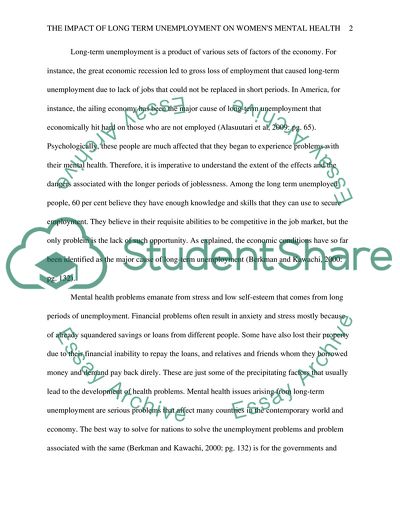Cite this document
(“Impact of Long-term Unemployment on Women's Mental Health Essay”, n.d.)
Impact of Long-term Unemployment on Women's Mental Health Essay. Retrieved from https://studentshare.org/psychology/1617179-impact-of-long-term-unemployment-on-womens-mental-health
Impact of Long-term Unemployment on Women's Mental Health Essay. Retrieved from https://studentshare.org/psychology/1617179-impact-of-long-term-unemployment-on-womens-mental-health
(Impact of Long-Term Unemployment on Women'S Mental Health Essay)
Impact of Long-Term Unemployment on Women'S Mental Health Essay. https://studentshare.org/psychology/1617179-impact-of-long-term-unemployment-on-womens-mental-health.
Impact of Long-Term Unemployment on Women'S Mental Health Essay. https://studentshare.org/psychology/1617179-impact-of-long-term-unemployment-on-womens-mental-health.
“Impact of Long-Term Unemployment on Women'S Mental Health Essay”, n.d. https://studentshare.org/psychology/1617179-impact-of-long-term-unemployment-on-womens-mental-health.


